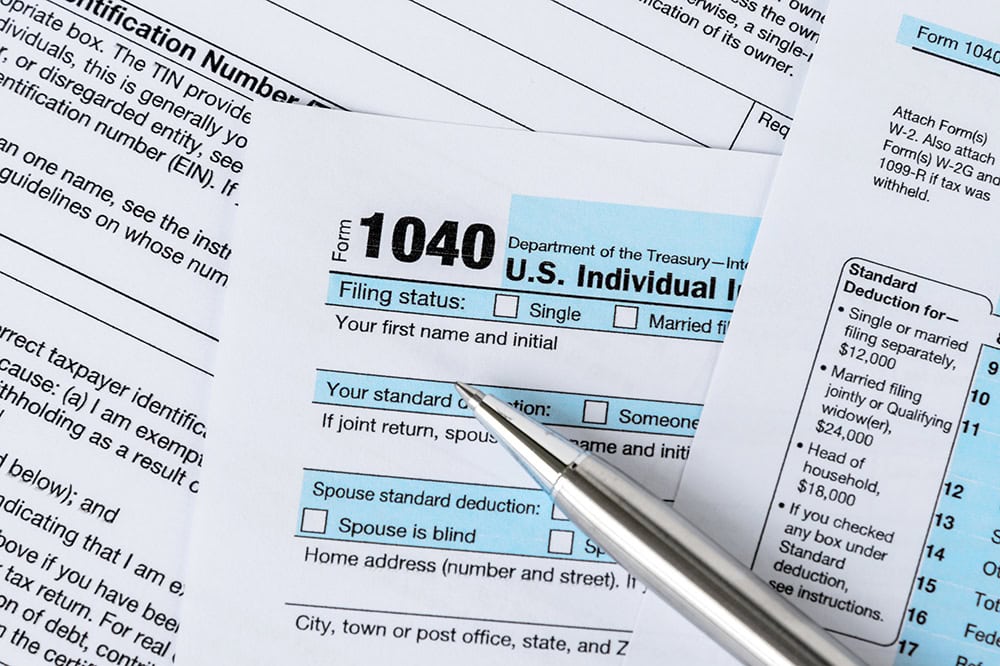State of the Union Poll: Voters Call on President to Reduce National Debt, Avoid Government Shutdowns
As President Prepares Annual Address, Americans Remain Deeply Concerned About the Nation’s Fiscal Outlook
The January 2018 Fiscal Confidence Index, Modeled after the Consumer Confidence Index, is 51 (100 is Neutral)
NEW YORK (January 29, 2018) — Following this month’s government shutdown and ahead of President Donald Trump’s State of the Union address, voters want to see more focus on the country’s fiscal challenges, according to a new poll released today by the Peter G. Peterson Foundation.
The survey, prepared by polling firms Global Strategy Group and North Star Opinion Research, finds that voters across party lines are calling for the President to put forward plans to reduce the national debt. And, by wide margins, Americans are looking for the President’s speech to address ways to reach a budget agreement following the recent government shutdown.
- 92% of voters believe it’s important for the President to address the country’s national debt problem in the State of the Union speech, with 90% saying it’s important for him to discuss ways to reduce the federal deficit.
- 90% of voters believe it is important for the President to discuss ways to reach a budget agreement and avoid another government shutdown, with 69% saying it’s very important that he do so.
More than eight in ten voters (82%) want the President and Congress to spend more time addressing the national debt, a seven-point increase from last month (75%). Further, a majority of voters feel strongly that national leaders should be spending “a lot more time” on the issue (58%).
In a time of deep partisan discord, as this month’s government shutdown underlined, the survey shows notable agreement across party lines when it comes to the need to address the national debt. At least four out of five voters from all sides of the political spectrum believe the President and Congress should be spending more time focusing on the debt, including 84% of Democrats, 82% of independent voters, and 80% of Republican voters.
“Unfortunately, the state of the union’s fiscal outlook is not sustainable, and is worse than it was one year ago,” said Michael A. Peterson, President and CEO of the Peter G. Peterson Foundation. “On the heels of fiscally irresponsible tax reform that will add trillions to our national debt, followed by an unfortunate government shutdown, Americans want a renewed and bipartisan focus on our nation’s fiscal health in 2018. Voters are calling on the President to acknowledge our dangerous debt situation, and put forward plans that will put us on a more sustainable path.”
The Fiscal Confidence Index measures public opinion about the national debt by asking six questions in three key areas:
- CONCERN: Level of concern and views about the direction of the national debt.
- PRIORITY: How high a priority addressing the debt should be for elected leaders.
- EXPECTATIONS: Expectations about whether the debt situation will get better or worse in the next few years.
The survey results from these three areas are weighted equally and averaged to produce the Fiscal Confidence Index value. The Fiscal Confidence Index, like the Consumer Confidence Index, is indexed on a scale of 0 to 200, with a neutral midpoint of 100. A reading above 100 indicates positive sentiment. A reading below 100 indicates negative sentiment.
Fiscal Confidence Index Key Data Points:
- The January 2018 Fiscal Confidence Index value is 51. . (The December value was 51 and the November value was 50.)
- The current Fiscal Confidence Index score for CONCERN about the debt is 48, indicating deep concern about the debt. The score for debt as a PRIORITY that leaders must address is 25, indicating that Americans want elected leaders to make addressing long-term debt a high priority. The score for EXPECTATIONS about progress on the debt is 79. The Fiscal Confidence Index is the average of these three sub-category scores.
- For a description of the complete methodology, see the Appendix below.
The Peter G. Peterson Foundation commissioned a poll by the Global Strategy Group and North Star Opinion Research to survey public opinion on the national debt. The nationwide poll included 1,005 U.S. registered voters, surveyed by telephone between January 22 and January 25, 2018. The poll has a margin of error of +/- 3.1%. The poll examined voters’ opinions on the national debt, political leadership, and America’s fiscal and economic health.
Detailed poll results can be found online at: www.pgpf.org/FiscalConfidenceIndex.
About the Peter G. Peterson Foundation
The Peter G. Peterson Foundation is a nonprofit, nonpartisan organization that is dedicated to increasing public awareness of the nature and urgency of key fiscal challenges threatening America’s future, and to accelerating action on them. To address these challenges successfully, we work to bring Americans together to find and implement sensible, long-term solutions that transcend age, party lines and ideological divides in order to achieve real results. To learn more, please visit www.pgpf.org.
APPENDIX: Fiscal Confidence Index Methodology and Questions
- The Fiscal Confidence Index is released monthly by the Peter G. Peterson Foundation.
- The Fiscal Confidence Index value is based on six questions in three categories.
- As is done with the Consumer Confidence Index, the first step in calculating the Fiscal Confidence Index is determining the “Relative Value” for each question. This calculation is made by taking the positive response for each question and dividing it by the sum of the positive and negative responses. Each question was asked on a four-point scale, and answers were weighted according to intensity, with the strongest responses counting twice as much as the middle responses (“much” better or worse answers count twice as heavily as “somewhat” better or worse answers).
- The scores for the Concern, Priority, and Expectations categories are determined by averaging the scores derived from the two questions in each category.
- The Fiscal Confidence Index value is converted from the Relative Value to place it on a scale on which 100 indicates equal positive and negative sentiment, while values below 100 indicate negative sentiment and values above 100 indicate positive sentiment.
- The questions are as follows:
| At the end of the month, President Trump will deliver his annual State of the Union address and discuss his priorities for the nation. I would now like to list a few topics that the President could address during his State of the Union address. For each, please tell me whether you think it is very important, somewhat important, not that important, or not important at all that the President addresses that topic in his State of the Union address. | |
|---|---|
| Ways to reach a budget agreement to avoid another government shutdown | |
| Very important | 69% |
| Somewhat important | 21% |
| Not that important | 9% |
| Not at all important | 3% |
| (Don’t Know/Refused) | 3% |
| IMPORTANT (NET) | 90% |
| NOT IMPORTANT (NET) | 8% |
| The country’s national debt problem | |
| Very important | 61% |
| Somewhat important | 31% |
| Not that important | 4% |
| Not at all important | 2% |
| (Don’t Know/Refused) | 2% |
| IMPORTANT (NET) | 92% |
| NOT IMPORTANT | 7% |
| Ways to reduce the federal deficit | |
| Very important | 60% |
| Somewhat important | 29% |
| Not that important | 4% |
| Not at all important | 3% |
| (Don’t Know/Refused) | 4% |
| IMPORTANT (NET) | 90% |
| NOT IMPORTANT | 6% |
| CONCERN (48) | |||
|---|---|---|---|
| Thinking about our national debt over the last few years, would you say your level of concern has increased or decreased? ◊ Is that a lot or just a little? |
January 2018 | December 2017 | November 2017 |
| Increased a lot | 43% | 41% | 38% |
| Increased a little | 23% | 25% | 26% |
| Decreased a little | 9% | 8% | 11% |
| Decreased a lot | 5% | 4% | 6% |
| (No change) | 17% | 19% | 18% |
| (Don’t Know/Refused) | 3% | 2% | 2% |
| INCREASED (NET) | 66% | 66% | 64% |
| DECREASED (NET) | 15% | 13% | 17% |
| When it comes to addressing our national debt, would you say things in the United States are heading in the right direction or do you think things are off on the wrong track? ◊ Do you feel that way strongly or just somewhat? |
January 2018 | December 2017 | November 2017 |
| Right direction-Strongly | 15% | 17% | 14% |
| Right direction-Somewhat | 16% | 14% | 15% |
| Wrong track-Somewhat | 16% | 19% | 18% |
| Wrong track-Strongly | 40% | 39% | 40% |
| (Neither/Mixed) | 7% | 7% | 7% |
| (Don’t Know/Refused) | 7% | 5% | 5% |
| RIGHT DIRECTION (NET) | 31% | 30% | 29% |
| WRONG TRACK (NET) | 56% | 58% | 58% |
| PRIORITY (28) | |||
|---|---|---|---|
| Some people say that addressing the national debt should be among the president and Congress’ top 3 priorities. Do you agree or disagree? ◊ Do you feel that way strongly or just somewhat? |
January 2018 | December 2017 | November 2017 |
| Strongly agree | 51% | 50% | 49% |
| Somewhat agree | 26% | 24% | 25% |
| Somewhat disagree | 11% | 13% | 13% |
| Strongly disagree | 8% | 7% | 9% |
| (Don’t Know/Refused) | 5% | 6% | 4% |
| AGREE (NET) | 76% | 74% | 75% |
| DISAGREE (NET) | 18% | 20% | 22% |
| And when it comes to our national debt, do you think it is an issue that the president and Congress should spend more time addressing or less time addressing? ◊ Would you say a lot (more or less) time or just a little? |
Janaury 2018 | December 2017 | November 2017 |
| A lot more time | 58% | 49% | 51% |
| A little more time | 25% | 26% | 27% |
| A little less time | 4% | 6% | 6% |
| A lot less time | 4% | 5% | 4% |
| (The same amount of time) | 5% | 7% | 7% |
| (Don’t Know/Refused) | 5% | 7% | 5% |
| MORE TIME (NET) | 82% | 75% | 78% |
| LESS TIME (NET) | 8 | 11% | 10% |
| EXPECTATIONS (79) | |||
|---|---|---|---|
| And thinking about our national debt over the next few years, do you expect the problem to get better or worse? ◊ Is that much (better or worse) or just somewhat (better or worse)? |
January 2018 | December 2017 | November 2017 |
| Much better | 12% | 14% | 10% |
| Somewhat better | 18% | 18% | 17% |
| Somewhat worse | 24% | 23% | 26% |
| Much worse | 35% | 37% | 38% |
| (No change) | 5% | 3% | 3% |
| (Don’t know/Refused) | 6% | 6% | 5% |
| BETTER (NET) | 30% | 32% | 27% |
| WORSE (NET) | 59% | 60% | 64% |
| And when it comes to our national debt, are you optimistic or pessimistic that the United States will be able to make progress on our national debt over the next few years? ◊ Would you say you are very (optimistic or pessimistic) or just somewhat? |
Janaury 2018 | December 2017 | November 2017 |
| Very optimistic | 19% | 20% | 18% |
| Somewhat optimistic | 29% | 24% | 26% |
| Somewhat pessimistic | 17% | 17% | 22% |
| Very pessimistic | 27% | 31% | 28% |
| (Neither/Mixed) | 3% | 4% | 4% |
| (Don’t Know/Refused) | 4% | 3% | 3% |
| OPTIMISTIC (NET) | 48% | 45% | 44% |
| PESSIMISTIC (NET) | 44% | 48% | 50% |
Further Reading
Budget Basics: What Is the Child Tax Credit?
The CTC provides assistance to families with children, and while it represents a relatively modest part of overall government spending, it is one of the largest tax expenditures.
Budget Basics: Tax Expenditures
Tax expenditures can come in the form of exclusions, exemptions, deductions, and credits.
What Are the Economic Costs of Child Poverty?
Child poverty is higher in the United States than in other wealthy countries. Studies show that it has quantifiable economic costs.


